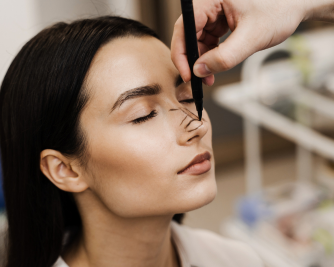Rhinoplasty, also known as a nose job, is a surgical procedure that reshapes the nose. It is one of the most popular cosmetic procedures in the world and for good reason. A well-performed rhinoplasty can make a dramatic difference in a person’s appearance and improve breathing problems caused by a deviated septum or other nasal obstructions.
Although it’s highly sought after by adults of all ages, it is one of the more complex cosmetic procedures offered by rhinoplasty surgeons in Los Angeles. Keep reading to learn about the most challenging parts of rhinoplasty.
Managing Patient Expectations
Many patients often come into the procedure with a specific idea of what they want their nose to look like, not realizing that it might not be possible to achieve that exact look. Rhinoplasty surgeons work closely with patients to help them understand their goals and to give them a better grasp of what is realistically achievable. Surgeons and patients must communicate clearly throughout the rhinoplasty process to ensure that both parties are on the same page.
Achieving Symmetry
The nose is made of bone, cartilage, and soft tissue. It can be difficult to adjust these components to create a balanced and symmetrical appearance. Achieving symmetry may require multiple procedures.
Balancing Aesthetics and Function
Rhinoplasty is not just about improving the appearance of the nose; it’s also about improving function. Some patients have breathing difficulties or other functional issues that must be addressed during the procedure.
Balancing the need for aesthetic improvements with the need for functional improvements can be challenging. To create a treatment plan that addresses aesthetic and functional concerns, rhinoplasty surgeons in Los Angeles must consider the patient’s goals, medical history, and any underlying conditions.
Maintaining the Nose’s Unique Features
Rhinoplasty is a delicate procedure in which a highly skilled surgeon makes incisions and manipulates the bone and cartilage structures of the nose. The greater the surgeon’s skills and expertise, the safer the procedure and outcome for patients. No one-size-fits-all approach to rhinoplasty exists because every patient’s nose is unique. To create a customized surgical plan, rhinoplasty surgeons must consider the patient’s nasal and facial features, the desired outcome, and specific rhinoplasty techniques.

Open Rhinoplasty: This technique involves making an incision on the columella, which is the strip of tissue between the nostrils. The surgeon then lifts the skin off the nose to access the underlying bone and cartilage.
Closed Rhinoplasty: In this technique, all incisions are made inside the nostrils. The surgeon works through these incisions to reshape the nose.
Tip Rhinoplasty: This technique refines the shape of the nasal tip. The surgeon may use cartilage grafts to improve the projection and definition of the tip.
Septoplasty: This technique corrects a deviated septum, which can cause breathing difficulties. The surgeon will make an incision inside the nose and then straighten or remove the deviated portion of the septum.
Reduction Rhinoplasty: This technique reduces the size of the nose. The surgeon will remove bone and cartilage to create a smaller nose.
Augmentation Rhinoplasty: This type of nose job increases the size of the nose. The surgeon may use cartilage grafts or implants to add volume to the nose.
Ethnic Rhinoplasty: This technique addresses the unique features of non-Caucasian noses. The surgeon utilizes techniques specific to the patient’s ethnic background to achieve the desired results.
Affording Rhinoplasty
Another challenging part of rhinoplasty for some patients is the cost. Rhinoplasty is a major surgery, and it can be expensive. Patients should be prepared to pay for the cost of the surgery and the cost of anesthesia, hospitalization, and follow-up care.
Recovering From Rhinoplasty and Post-Op Care
After surgery, patients typically experience pain, swelling, and bruising. They may also have difficulty breathing through their nose. This can be a difficult time for patients; therefore it is important to have realistic expectations about the recovery process. Patients must follow strict instructions on caring for their nose and avoiding certain activities to prevent damage to its delicate tissues and structures. The healing process can be prolonged and unpredictable. Swelling and bruising can take weeks or even months to subside, and it can take up to a year for the final results to become apparent. Therefore, patients must have realistic expectations and be patient throughout the healing process.
Avoiding Complications
Like any surgical procedure, rhinoplasty carries some risk of complications. These can include bleeding, infection, and adverse reactions to anesthesia. Surgeons must take precautions to minimize the risk of complications and be prepared to manage them if they do occur.
Key Takeaways
Rhinoplasty is a complex procedure that requires skill, precision, and attention to detail. Managing patient expectations, achieving symmetry, balancing aesthetics and function, managing post-operative pain and recovery, and avoiding complications are all challenging aspects of the procedure.
Rhinoplasty is a major decision that requires careful consideration of the risks and benefits before committing to the procedure. Patients should talk to their doctor about their expectations for the surgery to ensure they are comfortable with the risks involved. Rhinoplasty is a life-changing procedure. By carefully considering the risks and benefits of the surgery and by following your doctor’s instructions, you can increase your chances of a successful outcome.
